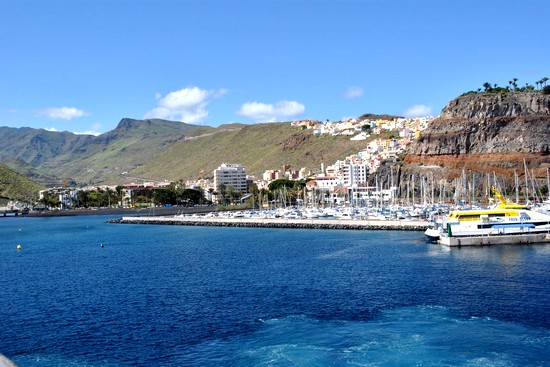At the end of the 15th century, when La Gomera was managed by Hernan Peraza the younger, there was the famous Gomer Rebellion. Natives, who for a long time turned a blind eye to the cruel deeds and infamy of the Spanish governor, they revolted, when he began to openly cheat on his wife with the fiancée of the most powerful Guanche- beautiful Ilala. W 1488 r. the hated steward died at the hands of the brave shepherd Hautacuperche (his statue stands on the beach in Valle Gran Rey), while his wife and a handful of servants barricaded herself at Torre del Conde in San Sebastian. The governor of Gran Canaria was notified of the rebellion, Summer Stone, who without hesitation set out to save the besieged in Torre del Conde. At the sight of the administrators, famous for their cruelty, the Guanches fled to the mountains. Some of them returned to San Sebastian after that, how de Vera announced an abolition for these, who voluntarily come to confess to the Iglesia de la Asunción. Unfortunately, the Spanish governor deceived the Guanches – each, who passed through the temple doors (today ironic called the Door of Forgiveness - puerta de perdón), he was being killed. Pedro de Vera ordered to capture and cruelly murder all male Guanches over the age of 15, and to take women and children prisoner. To complete the bloody work, also ordered to kill over 300 Gomers living in Gran Canaria.
Beaches
There are two black beaches in San Sebastian – Playa de San Sebastian right next to the port and hidden behind a rocky headland to the east of the port (access through the tunnel) Cueva Beach, from which, in good weather, you can see Tenerife and the Teide volcano. You can also go to Playa Abalos to the east of the city or even further away, the longest (650 m) in this part of the island of Playa de Aguila.
Surroundings of San Sebastian
Monument to the Sacred Heart of Jesus
Entering the port of San Sebastian, It is hard not to notice a hill rising to the west of the city, crowned with a small statue of Jesus. From this rather original vantage point you have a wonderful view of San Sebastian, Tenerife and of course the Teide volcano towering over everything. This is the best place on the island to watch the sunrise.
Hermitage of Our Lady of Gadelupe
The asphalt road along the coast, and then a gravel road leads from San Sebastian to the small settlement of Puntallana, away from the capital by 12 km to the north. A small chapel rises on a plateau covered with tabaibas typical of the Canary Islands., which houses a 25 cm tall statue of Our Lady of Guadelupe. The patron saint of the island is celebrated every five years, in October.
Patroness of La Gomery – Our Lady of Guadelupe
Patroness of La Gomery, Virgin of Guadeloupe, appeared on the island in the 16th century. The miraculous statue was found by the crew of a sailing ship going to America. Sailing near the island, the sailors noticed an unusual glow emanating from the cave. The captain of the ship personally went to the grotto, in which he found the miraculous statue of the Virgen de Guadelupe. Initially, the captain wanted to take the figurine to America, however, when opposing winds for several days prevented his ship from leaving the area of La Gomera, decided to bring the Virgen de Guadelupe back to the cave. As he thought, so he did, and before going out into the open, he informed the mayor of San Sebastian about the miraculous statue, who together with the inhabitants went in a solemn procession to the cave. Since then, Nuestra Seora de Guadalupe is celebrated every five years on the first Saturday in October., which probably all the inhabitants of La Gomera come to the capital. The first part of the fiesta is very picturesque – fishermen bring a statue of the Virgin Mary from the sanctuary by boat.
